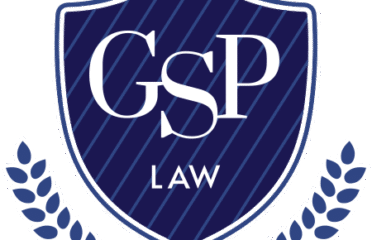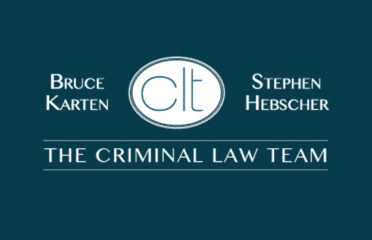What is Drug Law in Canada?
Canada’s drug laws represent a unique hybrid approach that combines criminal prohibitions, harm reduction strategies, and legalized access to certain substances. Since the legalization of cannabis in 2018 under the Cannabis Act, Canada has continued evolving its drug policies while maintaining strict controls on other substances through the Controlled Drugs and Substances Act (CDSA). This guide examines Canada’s current drug laws, including:
-
Legal status of various substances
-
Decriminalization pilot projects
-
Enforcement priorities
-
Harm reduction approaches
-
Recent legal developments
1. Legal Framework for Drugs in Canada
Key Legislation
| Law | Scope | Administered By |
|---|---|---|
| Cannabis Act (2018) | Legal cannabis framework | Health Canada |
| Controlled Drugs and Substances Act (1996) | Illegal drugs | Health Canada/Public Safety |
| Food and Drugs Act | Pharmaceutical regulation | Health Canada |
| Provincial cannabis laws | Retail/distribution rules | Provincial agencies |
Drug Schedules Under CDSA
-
Schedule I: Heroin, cocaine, methamphetamine (strictest penalties)
-
Schedule II: Cannabis (pre-legalization status)
-
Schedule III: LSD, MDMA, psilocybin
-
Schedule IV: Steroids, benzodiazepines (lower penalties)
2. Current Legal Status of Substances
Legal Substances
-
Cannabis (with restrictions)
-
Alcohol (provincially regulated)
-
Tobacco/nicotine (age-restricted)
-
Caffeine
Decriminalized (Certain Jurisdictions)
-
Small amounts of hard drugs (BC pilot until 2026)
-
Up to 2.5g cumulative of opioids, cocaine, meth, MDMA
-
Does not apply near schools/airports
-
Illegal But Enforcement Varied
-
Psilocybin mushrooms (allowed for some therapeutic use)
-
Other psychedelics (case-by-case exemptions)
Strictly Prohibited
-
Fentanyl (except pharmaceutical)
-
Carfentanil
-
New synthetic opioids
3. Cannabis Legalization & Regulation
Federal Rules
-
Legal age: 18+ (federal minimum)
-
Personal possession limit: 30g dried equivalent
-
Home cultivation: Up to 4 plants (except MB/SK)
-
Public consumption: Varies by municipality
Provincial Variations
| Province | Legal Age | Retail Model | Public Use Rules |
|---|---|---|---|
| Ontario | 19 | Private stores | Restricted areas |
| Quebec | 21 | Government stores | Strictest limits |
| Alberta | 18 | Private stores | Similar to tobacco |
| BC | 19 | Public/private mix | Some parks allowed |
4. Enforcement Priorities & Trends
Current CDSA Enforcement Focus
-
Production/distribution networks
-
Importation operations
-
Drug-related firearms offenses
-
Dangerous synthetic opioids
Arrest Statistics (2023)
-
Total drug offenses: 98,000+
-
Cannabis offenses: Down 65% since legalization
-
Opioid-related charges: Up 22% since 2020
5. Decriminalization Initiatives
BC’s Pilot Project (2023-2026)
-
No charges for possession under 2.5g of:
-
Opioids (heroin, fentanyl)
-
Cocaine
-
Methamphetamine
-
MDMA
-
-
Exclusions: Schools, airports, military bases
Other Jurisdictions Considering
-
Toronto
-
Vancouver
-
Montreal
6. Harm Reduction Approaches
Legal Safe Supply Programs
-
Hydromorphone prescriptions
-
Safe injection sites (39 approved nationally)
-
Drug checking services
Controversial Measures
-
Safe inhalation rooms
-
Prescribed heroin (limited cases)
-
Decriminalization backlash
7. Penalties for Drug Offenses
CDSA Possession Penalties
| Schedule | Maximum Summary Conviction | Maximum Indictment |
|---|---|---|
| I | 1 year imprisonment | 7 years imprisonment |
| II | 1 year imprisonment | 5 years imprisonment |
| III | 1 year imprisonment | 3 years imprisonment |
Trafficking/Production Penalties
-
Minimum sentences repealed in 2022
-
Maximum life imprisonment for Schedule I offenses
-
Financial penalties up to $5M for corporations
8. Medical Access & Exemptions
Legal Medical Pathways
-
Cannabis for medical purposes
-
Special Access Program (for psychedelics)
-
Supervised injection sites
Notable Exemptions
-
Psilocybin therapy for end-of-life distress
-
Heroin-assisted treatment (limited cases)
-
MDMA/PTSD clinical trials
9. Recent Legal Developments (2024)
Legislative Changes
-
Cannabis Act amendments (packaging rules)
-
CDSA reforms (removing mandatory minimums)
-
New safer supply funding ($200M federal)
Key Court Cases
-
R v. Smith (BC medicinal cocaine)
-
Allard v. Canada (cannabis home grow rights)
-
Toronto v. Federal Government (safe injection sites)
10. Future of Drug Policy in Canada
Emerging Trends
-
Psychedelic decriminalization movements
-
Expanded safe supply programs
-
Cannabis 2.0 products regulation
-
AI drug detection systems
Ongoing Debates
-
Full decriminalization proposals
-
Safe consumption site expansions
-
Indigenous-led healing approaches
Conclusion: Canada’s Evolving Drug Landscape
Canadian drug laws continue shifting toward public health approaches while maintaining criminal prohibitions on dangerous substances. Understanding these complex frameworks helps citizens navigate legal risks while contributing to policy discussions.






















